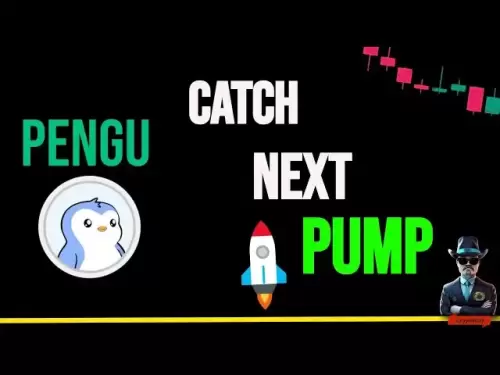-
 Bitcoin
Bitcoin $106,782.3966
-0.72% -
 Ethereum
Ethereum $2,406.7764
-1.16% -
 Tether USDt
Tether USDt $1.0005
0.02% -
 XRP
XRP $2.0918
-1.53% -
 BNB
BNB $644.5785
-0.17% -
 Solana
Solana $141.0925
-0.69% -
 USDC
USDC $1.0000
0.02% -
 TRON
TRON $0.2721
0.18% -
 Dogecoin
Dogecoin $0.1585
-1.26% -
 Cardano
Cardano $0.5497
-1.14% -
 Hyperliquid
Hyperliquid $35.8493
-1.58% -
 Bitcoin Cash
Bitcoin Cash $502.3089
2.20% -
 Sui
Sui $2.7092
3.87% -
 Chainlink
Chainlink $12.8551
-1.85% -
 UNUS SED LEO
UNUS SED LEO $9.0548
0.53% -
 Stellar
Stellar $0.2344
-0.85% -
 Avalanche
Avalanche $17.2676
-0.23% -
 Toncoin
Toncoin $2.8282
0.56% -
 Shiba Inu
Shiba Inu $0.0...01113
-1.14% -
 Litecoin
Litecoin $83.9593
-0.93% -
 Hedera
Hedera $0.1447
0.82% -
 Monero
Monero $306.9022
-2.07% -
 Bitget Token
Bitget Token $4.6358
3.42% -
 Dai
Dai $0.9999
0.01% -
 Ethena USDe
Ethena USDe $1.0001
0.02% -
 Polkadot
Polkadot $3.3211
0.06% -
 Uniswap
Uniswap $6.8775
0.75% -
 Pi
Pi $0.5664
-0.27% -
 Aave
Aave $256.0055
1.28% -
 Pepe
Pepe $0.0...09013
-3.24%
Crypto.com contract trading explained
Contract trading on Crypto.com enables users to speculate on cryptocurrency prices without owning the underlying assets, leveraging leverage and risk management tools for strategic trading.
Nov 26, 2024 at 02:58 pm
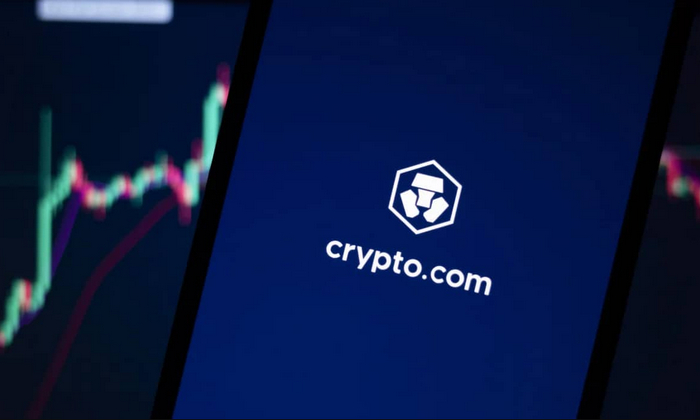
Crypto.com Contract Trading Explained: A Comprehensive Guide
Crypto.com is a leading cryptocurrency exchange that offers a comprehensive range of services including spot trading, derivatives trading, and crypto lending. Contract trading, also known as perpetual swaps or futures contracts, is a popular form of derivatives trading that allows users to speculate on the price of cryptocurrencies without actually owning the underlying assets.
In this article, we will provide a detailed explanation of contract trading on Crypto.com, including the steps involved, key concepts, and strategies. If you are new to contract trading or want to enhance your skills, this guide will provide you with the necessary knowledge and insights.
Step 1: Understanding Contract Trading
- What is Contract Trading?
Contract trading involves the buying and selling of contracts that represent the future price of an underlying asset. In the case of cryptocurrency contract trading, the underlying asset is a cryptocurrency such as Bitcoin or Ethereum. The contracts traded on Crypto.com are perpetual swaps, meaning they do not have an expiration date and can be held indefinitely. - Key Differences from Spot Trading:
Unlike spot trading, where you buy and sell actual cryptocurrencies, contract trading involves the trading of contracts that represent the future price of the asset. This allows traders to speculate on price movements without needing to own the underlying asset. - Leverage and Margin:
Contract trading often involves the use of leverage, which means borrowing funds to increase your trading power. Leverage allows you to control a larger position with a smaller amount of capital, but it also magnifies potential profits and losses. - Mark Price, Index Price, and Funding Rates:
Mark Price is the current reference price of the contract and is used to calculate profits and losses. Index Price is the weighted average of prices from various spot exchanges and is used as a reference point for determining funding rates. Funding Rates are periodic payments made by traders with long positions to traders with short positions or vice versa to ensure that the Mark Price remains close to the Index Price.
Step 2: Opening an Account and Funding
- Create a Crypto.com Account:
To begin contract trading on Crypto.com, you will need to create an account. The account creation process involves providing personal information, verifying your identity, and setting up two-factor authentication. - Deposit Funds:
Once your account is created, you will need to deposit funds to start trading. Crypto.com supports a wide range of funding methods, including bank transfers, credit cards, and cryptocurrencies. - Choosing a Trading Pair:
Crypto.com offers a variety of cryptocurrency trading pairs for contract trading. Each trading pair represents the contract that you can trade, such as BTC/USDT or ETH/USDC.
Step 3: Placing an Order
- Types of Orders:
There are different types of orders available for contract trading on Crypto.com, including Market Orders, Limit Orders, and Stop Orders. Market Orders are executed immediately at the current market price, while Limit Orders are executed only when the price reaches a specified level. Stop Orders are used to automatically enter or exit a trade when a certain price level is reached. - Order Parameters:
When placing an order, you will need to specify the order type, quantity, and price (for Limit Orders). The quantity represents the number of contracts you want to trade, and the price is the price at which you want to buy or sell the contract. - Leverage and Margin:
As mentioned earlier, contract trading often involves the use of leverage. You will need to select the amount of leverage you want to use, which will determine the margin requirement. The margin requirement is the amount of funds you need to hold in your account to cover potential losses. - Placing the Order:
Once you have specified all the order parameters, you can place the order. The order will be sent to the Crypto.com exchange and will be executed when the conditions are met.
Step 4: Managing Risk
- Using Stop-Loss Orders:
Stop-Loss Orders are a valuable risk management tool that allows you to limit your potential losses. A Stop-Loss Order automatically exits your position when the price reaches a specified level, preventing further price declines - Monitoring Your Positions:
It is important to monitor your open positions regularly to ensure that they are performing as expected. Crypto.com provides real-time tracking and charting tools that allow you to monitor your positions and make adjustments as needed. - Understanding Liquidation:
Liquidation occurs when your Margin Level (the ratio of your account equity to the margin requirement) falls below a certain threshold. If your Margin Level is too low, Crypto.com will automatically liquidate your positions to cover potential losses.
Step 5: Closing a Position
- Market and Limit Orders:
You can close a position by placing either a Market Order or a Limit Order. A Market Order will close the position immediately at the current market price, while a Limit Order will close the position only when the price reaches a specified level. - Partial and Full Closures:
You can close a position partially or fully. A partial close involves closing only a portion of your position, while a full close involves closing the entire position. - Profit and Loss:
When you close a position, you will either make a profit or a loss. Your profit or loss is calculated based on the difference between the opening and closing prices, multiplied by the number of contracts traded.
Disclaimer:info@kdj.com
The information provided is not trading advice. kdj.com does not assume any responsibility for any investments made based on the information provided in this article. Cryptocurrencies are highly volatile and it is highly recommended that you invest with caution after thorough research!
If you believe that the content used on this website infringes your copyright, please contact us immediately (info@kdj.com) and we will delete it promptly.
- Sonic, Magic Gathering, and July 2025: What's Trending?
- 2025-06-28 02:30:12
- Bitcoin Whale Inflows Nosedive: Are Investors Eyeing a New All-Time High?
- 2025-06-28 02:30:12
- Smart Investors Eye Audited Token RUVI for Rally Prediction
- 2025-06-28 02:35:12
- Mint, Childhood Memories, and Taste Experience: A Nostalgic Bite of the Good Old Days
- 2025-06-28 03:50:11
- Neo Pepe, XRP & Cardano: A Memecoin Summer Showdown?
- 2025-06-28 02:55:12
- Bitcoin ETFs, Institutional Demand, and S&P Global: What's the Hype?
- 2025-06-28 03:55:12
Related knowledge
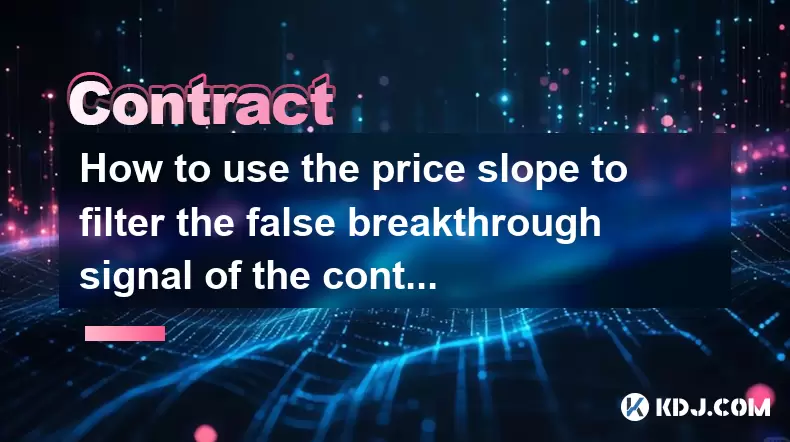
How to use the price slope to filter the false breakthrough signal of the contract?
Jun 20,2025 at 06:56pm
Understanding the Concept of Price Slope in Contract TradingIn contract trading, especially within cryptocurrency derivatives markets, price slope refers to the rate at which the price changes over a specific time period. It helps traders assess the strength and sustainability of a trend. A steep slope may indicate strong momentum, while a shallow slope...
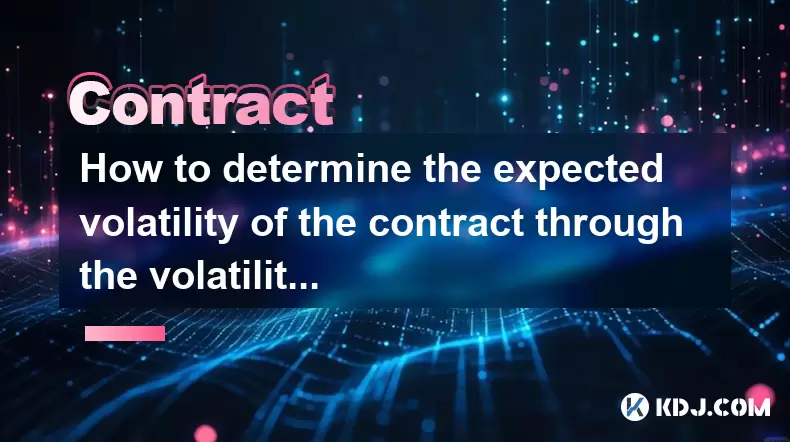
How to determine the expected volatility of the contract through the volatility cone?
Jun 19,2025 at 12:28pm
Understanding the Basics of Volatility in Cryptocurrency ContractsIn the realm of cryptocurrency trading, volatility is a key metric that traders use to assess potential risk and reward. When dealing with futures contracts, understanding how volatile an asset might become over time is crucial for position sizing, risk management, and strategy developmen...
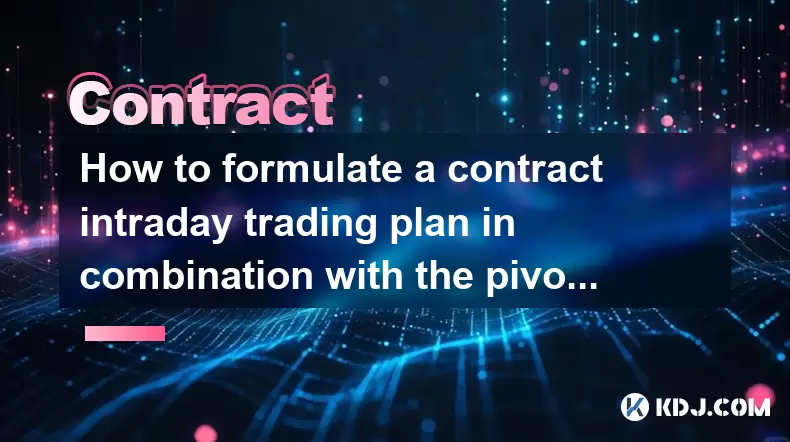
How to formulate a contract intraday trading plan in combination with the pivot point system?
Jun 21,2025 at 03:42pm
Understanding the Basics of Pivot Points in Cryptocurrency TradingPivot points are technical analysis tools used by traders to identify potential support and resistance levels. These levels are calculated using the previous day's high, low, and closing prices. In the context of cryptocurrency trading, where markets operate 24/7, pivot points help trader...
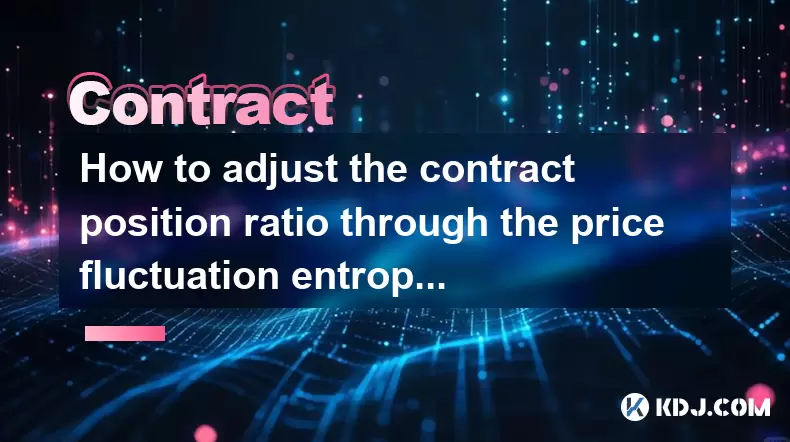
How to adjust the contract position ratio through the price fluctuation entropy?
Jun 22,2025 at 11:42am
Understanding Price Fluctuation Entropy in Cryptocurrency ContractsIn the world of cryptocurrency futures trading, price fluctuation entropy is a relatively new concept used to measure market volatility and uncertainty. It derives from information theory, where entropy refers to the degree of randomness or unpredictability in a system. In crypto contrac...
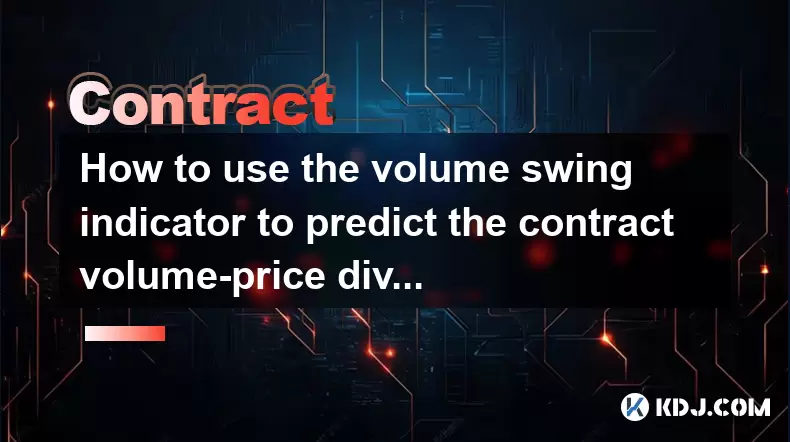
How to use the volume swing indicator to predict the contract volume-price divergence?
Jun 18,2025 at 11:42pm
Understanding the Volume Swing IndicatorThe volume swing indicator is a technical analysis tool used primarily in cryptocurrency trading to evaluate changes in volume over time. Unlike price-based indicators, this metric focuses solely on trading volume, which can provide early signals about potential market reversals or continuations. The key idea behi...
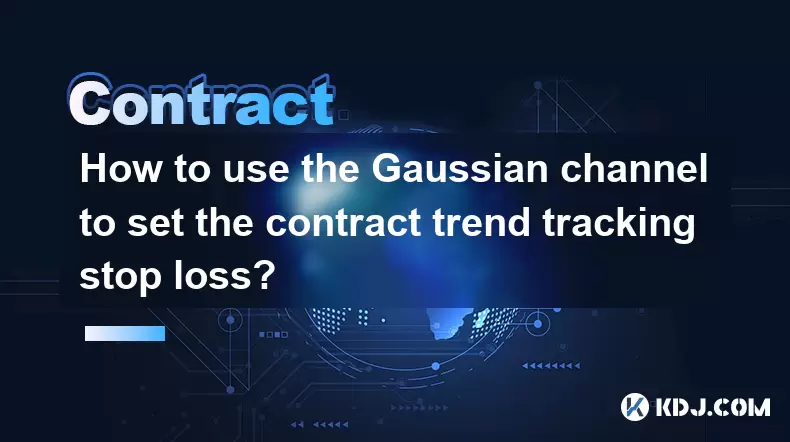
How to use the Gaussian channel to set the contract trend tracking stop loss?
Jun 18,2025 at 09:21pm
Understanding the Gaussian Channel in Cryptocurrency TradingThe Gaussian channel is a technical indicator used primarily in financial markets, including cryptocurrency trading, to identify trends and potential reversal points. It is based on statistical principles derived from the normal distribution, commonly known as the Gaussian distribution or bell ...

How to use the price slope to filter the false breakthrough signal of the contract?
Jun 20,2025 at 06:56pm
Understanding the Concept of Price Slope in Contract TradingIn contract trading, especially within cryptocurrency derivatives markets, price slope refers to the rate at which the price changes over a specific time period. It helps traders assess the strength and sustainability of a trend. A steep slope may indicate strong momentum, while a shallow slope...

How to determine the expected volatility of the contract through the volatility cone?
Jun 19,2025 at 12:28pm
Understanding the Basics of Volatility in Cryptocurrency ContractsIn the realm of cryptocurrency trading, volatility is a key metric that traders use to assess potential risk and reward. When dealing with futures contracts, understanding how volatile an asset might become over time is crucial for position sizing, risk management, and strategy developmen...

How to formulate a contract intraday trading plan in combination with the pivot point system?
Jun 21,2025 at 03:42pm
Understanding the Basics of Pivot Points in Cryptocurrency TradingPivot points are technical analysis tools used by traders to identify potential support and resistance levels. These levels are calculated using the previous day's high, low, and closing prices. In the context of cryptocurrency trading, where markets operate 24/7, pivot points help trader...

How to adjust the contract position ratio through the price fluctuation entropy?
Jun 22,2025 at 11:42am
Understanding Price Fluctuation Entropy in Cryptocurrency ContractsIn the world of cryptocurrency futures trading, price fluctuation entropy is a relatively new concept used to measure market volatility and uncertainty. It derives from information theory, where entropy refers to the degree of randomness or unpredictability in a system. In crypto contrac...

How to use the volume swing indicator to predict the contract volume-price divergence?
Jun 18,2025 at 11:42pm
Understanding the Volume Swing IndicatorThe volume swing indicator is a technical analysis tool used primarily in cryptocurrency trading to evaluate changes in volume over time. Unlike price-based indicators, this metric focuses solely on trading volume, which can provide early signals about potential market reversals or continuations. The key idea behi...

How to use the Gaussian channel to set the contract trend tracking stop loss?
Jun 18,2025 at 09:21pm
Understanding the Gaussian Channel in Cryptocurrency TradingThe Gaussian channel is a technical indicator used primarily in financial markets, including cryptocurrency trading, to identify trends and potential reversal points. It is based on statistical principles derived from the normal distribution, commonly known as the Gaussian distribution or bell ...
See all articles





















